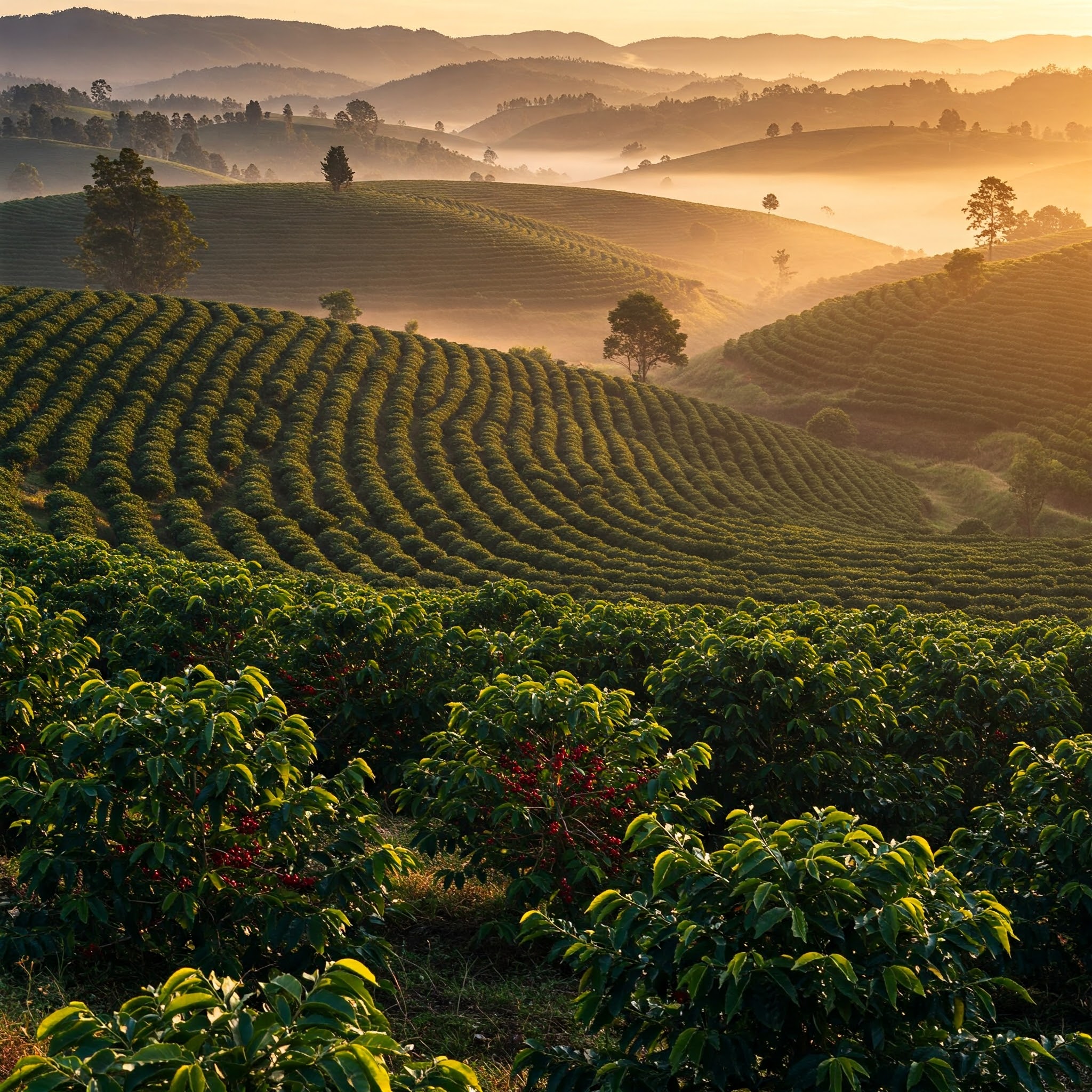
The Growing Demand for Indian Coffee Beans in Global Markets: Opportunities for Exporters
The Growing Demand for Indian Coffee Beans in Global Markets: Opportunities for Exporters
India’s coffee export industry is witnessing remarkable growth, driven by a combination of rising global demand, price surges, and evolving trade dynamics. As one of the world’s leading coffee producers, India is well-positioned to expand its market presence. This blog explores key trends, major export destinations, challenges, and value-added opportunities for Indian coffee exporters.
Key Factors Driving Demand
1. Global Price Surge
Robusta coffee prices have reached multi-decade highs due to supply disruptions in major producing countries like Vietnam and Brazil. Since Robusta accounts for over 70% of India's coffee production, this surge has significantly boosted Indian coffee exports.
2. Stockpiling Ahead of EU Regulations
European buyers have been accumulating coffee stocks in anticipation of the European Union’s Deforestation Regulation (EUDR), expected to impact trade with coffee-producing nations like India.
3. Growing Demand for Instant Coffee
Instant coffee, which predominantly uses Robusta beans, has seen increasing consumption in key markets such as Russia and Turkey, further driving Indian coffee exports.

4. Quality and Flavor Profile
Indian coffee is renowned for its mild flavor, low acidity, and premium processing methods such as shade-grown and sun-dried techniques, making it a preferred choice in European markets.
Export Figures and Major Markets
Export Value and Growth
India’s coffee exports have seen significant growth:
FY 2023-24: $1.29 billion, nearly doubling from $719.42 million in FY 2020-21.
April-November FY24: $1,146.9 million, a 29% increase over the previous year.
Top Export Destinations
India’s coffee exports are primarily directed toward Europe and the Middle East. Key importing countries include:
Italy: $151 million (₹11.58 billion)
Germany: $109 million (₹9.78 billion)
Russia: ₹9 billion
Belgium: ₹6.63 billion
Jordan: $47.3 million (₹4.1 billion)
UAE & Turkey: Emerging as key markets due to global supply chain shifts.
Challenges in Indian Coffee Exports
Despite recent growth, Indian coffee exports are projected to decline by over 10% in 2025 due to lower production and reduced carry-forward stocks. Additional challenges include:
Climate Change & Weather Variability: Unpredictable rainfall and rising temperatures impact yields.
Labor Shortages: High labor costs and dependency on migrant workers create instability.
Regulatory Compliance: Adapting to new EU and US trade regulations requires investment in sustainable practices.
Infrastructure Gaps: Limited processing facilities in emerging coffee-producing states hinder export quality and consistency.
Major Indian Coffee Exporters
Several companies play a crucial role in India’s coffee export industry:
Vayhan Coffee Limited
CCL Products India Limited
Allanasons Private Limited
Key Coffee-Producing Regions in India
India’s coffee cultivation is primarily concentrated in the southern states, with emerging production in the Eastern Ghats and the Northeast.
Major Coffee-Producing States
Karnataka (71% of total production): Kodagu, Chikmagalur, Hassan
Kerala: Predominantly Robusta (Wayanad)

Tamil Nadu: High-altitude Arabica (Shevaroy Hills)
Andhra Pradesh: Araku Valley Arabica (90% exported)
Odisha: Koraput region’s Arabica gaining recognition
Northeastern States: Meghalaya, Mizoram, Nagaland, and Manipur emerging as sustainable coffee producers
Enhancing Export Potential through Value Addition
To remain competitive, Indian coffee producers and exporters are focusing on value-added products and processes:
1. Specialty Coffee Production
Promoting organic and Fairtrade-certified beans for premium pricing.
Enhancing unique flavor profiles to appeal to niche markets.
2. Advanced Processing Methods
Wet processing for higher quality and consistency.
Dry processing to maintain distinct natural flavors.
3. Roasting and Instant Coffee Production
Expansion in roasting and grinding facilities to enhance product variety.
Increased focus on instant coffee, which commands higher margins.
4. Utilizing Coffee By-Products
Repurposing coffee husks and silverskins for biofuels, animal feed, and cosmetics.
5. Branding and Marketing
Developing strong brand identities to position Indian coffee as a premium global product.
Leveraging digital marketing and global exhibitions to enhance market reach.
Export Infrastructure and Trade Routes
Major Ports Handling Coffee Exports
Mangalore Port: Key hub for coffee exports.
Chennai Port: Connects to European markets.
Cochin Port: Handles a substantial share of coffee exports.
Shipping Routes
Europe: Primarily through the Suez Canal.
Middle East & Africa: Shorter routes via the Arabian Sea and Red Sea.
Asia & Americas: Longer routes via the Strait of Malacca or around Africa.
Compliance and Documentation for Coffee Exports
Mandatory Registrations
Coffee Board of India Registration
Import-Export Code (IEC) issued by DGFT
APEDA Registration for agricultural exports
Quality and Safety Certifications
FSSAI Registration: Ensures food safety compliance.
Organic and Fairtrade Certifications: Essential for specific markets.
Phytosanitary Certificate: Guarantees pest-free shipments.
Country-Specific Compliance
EU Deforestation Regulation (EUDR): Requires proof of sustainable sourcing.
US & Japan Standards: Stringent labeling and organic requirements.
Future Prospects for Indian Coffee Exporters
While traditional coffee-growing regions continue to dominate, emerging coffee-producing states in India hold immense potential. However, they must overcome challenges such as climate change, labor shortages, and inadequate infrastructure.
Strategic Interventions for Growth
Government Support & Policy Development: Increased subsidies, training programs, and infrastructure investments.
Skill Development & Workforce Training: Equipping workers with modern coffee cultivation and processing techniques.
Sustainability & Climate-Resilient Farming: Encouraging eco-friendly practices to meet global compliance requirements.
Market Expansion & Diversification: Targeting new markets beyond Europe and the Middle East.
Conclusion
The future of Indian coffee exports looks promising, driven by rising global demand, evolving consumer preferences, and strategic investments in quality and sustainability. While challenges like declining production and regulatory shifts must be addressed, Indian exporters can leverage value addition, market diversification, and sustainable practices to strengthen their position in the global coffee trade.
By capitalizing on these opportunities, Indian coffee exporters can not only maintain their foothold in existing markets but also expand into new territories, ensuring long-term growth and profitability.